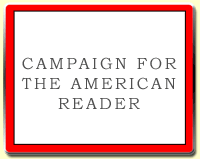 At FiveBooks he told Anna Blundy about the best books on film noir, including:
At FiveBooks he told Anna Blundy about the best books on film noir, including:The American Cinema: Directors and Directions 1929-1968 by Andrew Sarris.Read about the other books on the list.
This is the book that kick-started appreciation of film noir. It’s a massively influential book that introduced the ‘auteur’ theory into English writing. Sarris made us take the key directors seriously, as well as the genre itself. The French had already been taking popular genres seriously for years, but this was the book that ignited the touch paper here.
Before you start talking about this book, could you actually define film noir for me?
Film noir is a genre that had no definition in its own day other than ‘crime film’. All of those who were making films noirs, such as Robert Mitchum and similar great stars and directors of that era, wouldn’t have called what they were working on film noir. They were making crime movies and dramas. So, the title ‘film noir’ defines the moment when we started to take such films seriously and it was given a French moniker because that nation was the first to grant it serious academic attention.
The films were made largely in the 1940s, which is the defining period, and they’re steeped in all the imagery we know so well – crisp black and white photography, the glistening rain-swept streets, the femme fatale with the marcel wave smoking in a bar, and the hero who’s going to end up in a bad way if he’s seduced by her. It’s interesting that film noir has so many female followers, because it’s not a progressive genre when it comes to women. Either they’re the repository of all that’s good and they stay at home, or they are the dangerously attractive femme fatale and the hero ends up dead after having sex with them.
Tell me about the book now.
Sarris is a writer you will pick up if you have any love or appreciation for cinema. You will be inspired by the book – and you will also be throwing it across the room, because, along with the great enthusiasms and the famous pecking order of directors,he has some notable blind spots. There are directors like Hitchcock, of course, who are canonised, but Sarris writes off film-makers who are now held in very high esteem, such as Stanley Kubrick, who made one of the very best films noirs, The Killing. But the book takes the genre seriously and suggests we can look at these films in the same way as ‘art cinema’ directors such as Fellini and Bergman, who were automatically taken seriously. It was an incredibly influential book. People like me almost started writing film criticism because of this book.
Do you agree with him about Stanley Kubrick?
No, not at all, and I spend most of my time disagreeing with him when reading the book. Andrew Sarris was talking about people like Otto Preminger, who was basically considered to be a studio director, but for Sarris the director is the absolute king and this is now a contentious issue. If you look at Otto Preminger’s wonderful film Laura, the screenplay and the acting are vitally important. So there needed to be a redressing. Things needed to settle down, but Sarris started the ball rolling with this book.
See Forshaw's critic's chart of six American noir masters.
--Marshal Zeringue



